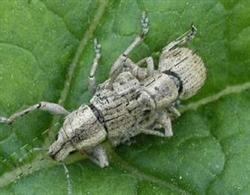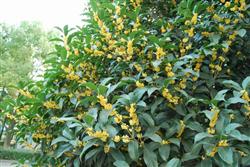Control of ginseng diseases

Ginseng belongs to the genus Panax of Araliaceae, which mainly produces Jilin, Liaoning and Heilongjiang provinces in China. It is used in medicine with roots, stems, leaves and fruits, which has the functions of tonifying vital energy, strengthening heart and rescuing, replenishing heart and restoring pulse, invigorating body and calming mind. There are many kinds of ginseng diseases, and there are more than 20 kinds of ginseng diseases in China. At present, common and serious diseases occur in production, such as ginseng black spot, blight, Sclerotinia sclerotiorum, rust rot and so on. First, ginseng black spot symptom identification mainly harms leaves, as well as stems, pedicels, fruits, seeds and other parts. The leaf spot is nearly round or irregular, yellowish brown, slightly wheeled, with a yellowish halo and a black mildew layer. Most of the disease spots lead to the early withering of leaves. The disease spot on the stem is oval, yellowish brown, extends up and down, the middle depression becomes black, and the upper black mildew layer causes the stem to lodge. Brown spots appear on the damaged surface of the fruit, and the fruit is withered and shedding early. The black mildew layer on the spot, that is, the conidia of the pathogen. The disease is common and is one of the most serious diseases of ginseng. The pathogen and pathogenesis of ginseng black spot is caused by Alternaria subphyla. Conidiophores 2 Mel 16 roots fascicled, brown, tip light; conidia solitary or 2 Mel 3 series, obclavate, yellowish brown, with short beak. The pathogen overwintered on the diseased remains, soil and seed surface with mycelium and conidia, and became the primary infection source of the disease in the following year. The conidia are transmitted by wind and rain, and the germinating bud tube invades directly from the host stomata or epidermis. When the environmental conditions are suitable, a large number of conidia are produced on the disease spot, which are re-infected many times after transmission. The optimum temperature for conidia germination was 15 ℃-25 ℃, and the relative humidity was above 98%. The disease began in the middle of May in Northeast China, and the peak period was from July to August. High humidity and rain is the key factor for the epidemic of the disease. Control measures ① selected disease-free seeds for seed disinfection. Soak in polyantimycin 200mg / kg or 50% mancozeb 1000 times solution for 24 hours, or mix seeds according to 0.2% of seed weight. The disabled body was removed by ②. In early spring, 100 mg / kg polyantimycin or 1% copper sulfate was used to fully disinfect the ginseng border operation road and greenhouse. ③ chooses the plot with high topography and good drainage and permeability to plant ginseng, and the bed surface of the double permeable shed should be covered with fallen leaves to achieve reasonable lighting. In the rainy and hot season, measures should be taken to prevent rain and avoid strong light. ④ ginseng seedlings were sprayed with 50% mancozeb 800x solution, 80% Dasheng 600x liquid, 100m / kg polyantimycin 200mg / kg, imidazolium 400x solution, 1v 1vl 120Bordeaux solution and so on, once every 7 times every 10 days, and 3 times according to the progress of the disease. 2. Identification of symptoms of ginseng blight harms stems, leaves and roots. The disease spot of the leaf is water-stained, irregular, dark green, without obvious edge, the disease spot expands and decays rapidly, and the whole compound leaf withered and drooped. Dark stripes appeared on the stem, which soon rotted, softening and lodging the stem. The root is immersed in yellowish brown soft rot, the internal tissue is yellowish brown pattern, the root bark is easy to peel off, wrapped with white mycelium adherent clods, and has a special fishy smell. The pathogen and pathogenesis of ginseng blight is caused by flagellum Phytophthora. The hyphae are woolly, colorless, without septum, and branched. The zoospores are ovate, zoospores are round, oospores are globose, yellowish brown. The pathogen overwintered in the diseased remains and soil with mycelia and oospores. When the conditions were suitable in the next year, the hyphae directly infected the ginseng roots, or a large number of zoosporangia spread to the aboveground parts to infect stems and leaves. Wind, rain and farming operations are the main ways of disease transmission. During the growth period of ginseng, multiple re-infection can be carried out. The disease began in June in Northeast China, and the peak period was from mid-July to mid-August. When the temperature is more than 20 ℃ and the soil moisture is more than 50%, the epidemic disease will occur greatly. The ginseng bed is not well ventilated and transparent, the soil is hardened, there is too much nitrogen fertilizer, and the density is too high, which are mostly conducive to the occurrence and epidemic of the disease. Prevention and control measures ① strictly prevent greenhouse leakage, pay attention to drainage, ventilation and light transmission. When planting ginseng in double transparent greenhouse, the bed must be covered with deciduous leaves, and the broad-leaved forest with large crown must be selected for planting ginseng under the forest. ② strengthens field management, maintains proper density, pulls out weeds in time, and pays attention to loosening soil and reducing humidity. ③ found and eliminated the diseased plants in time, the diseased plants should be removed from the bed and burned, and the diseased points were closed and sterilized with quicklime or 1% copper sulfate solution. Completely get rid of the sick and disabled in autumn. Before the beginning of the rainy season, ④ medicament control was sprayed with 1VR 160 Bordeaux solution, 40% Dysenamine 1000-fold solution, 40% Aluminium ethylphosphate solution, 25% Metalaxyl 600x solution, 72.2% Prozac 600x solution 7rel once in 10 days, and 3 times successively for 5 times according to the condition.
- Prev

Control methods of Ginseng Grey Weevil
The big gray weevil, also known as the weevil and Tula donkey, is 9-12 mm long, grayish yellow or grayish black and densely covered with gray-white scales. The head and beak are densely covered with golden glowing scales. The pests occurred this year mainly feed on young stems and leaves on the surface during seedling emergence, causing great harm. After being alarmed, he pretended to die and landed on the ground in the early morning and evening. ...
- Next

The reason why sweet-scented osmanthus does not bloom
The seedling selection of ① is poor. There is a kind of purple cinnamon that can not blossom until it grows into a big tree. If the purple cinnamon cuttings are mistakenly cut into seedlings, it is difficult to blossom. Osmanthus fragrans seedlings should be grafted with mature branches of improved varieties as scions, or obtained by high pressure at the base of flowering branches, which is not only of good quality, but also easy to blossom after survival. ② cultivation is not.
Related
- Fuxing push coffee new agricultural production and marketing class: lack of small-scale processing plants
- Jujube rice field leisure farm deep ploughing Yilan for five years to create a space for organic food and play
- Nongyu Farm-A trial of organic papaya for brave women with advanced technology
- Four points for attention in the prevention and control of diseases and insect pests of edible fungi
- How to add nutrient solution to Edible Fungi
- Is there any good way to control edible fungus mites?
- Open Inoculation Technology of Edible Fungi
- Is there any clever way to use fertilizer for edible fungus in winter?
- What agents are used to kill the pathogens of edible fungi in the mushroom shed?
- Rapid drying of Edible Fungi

